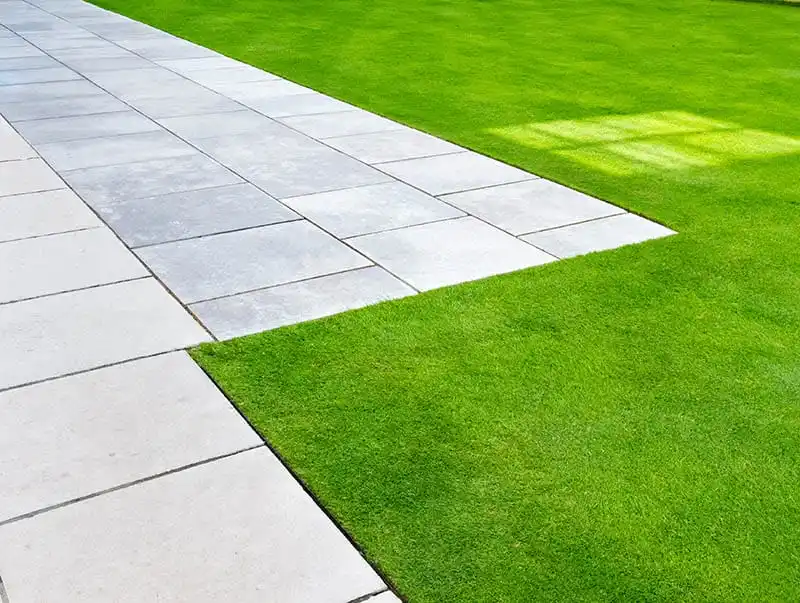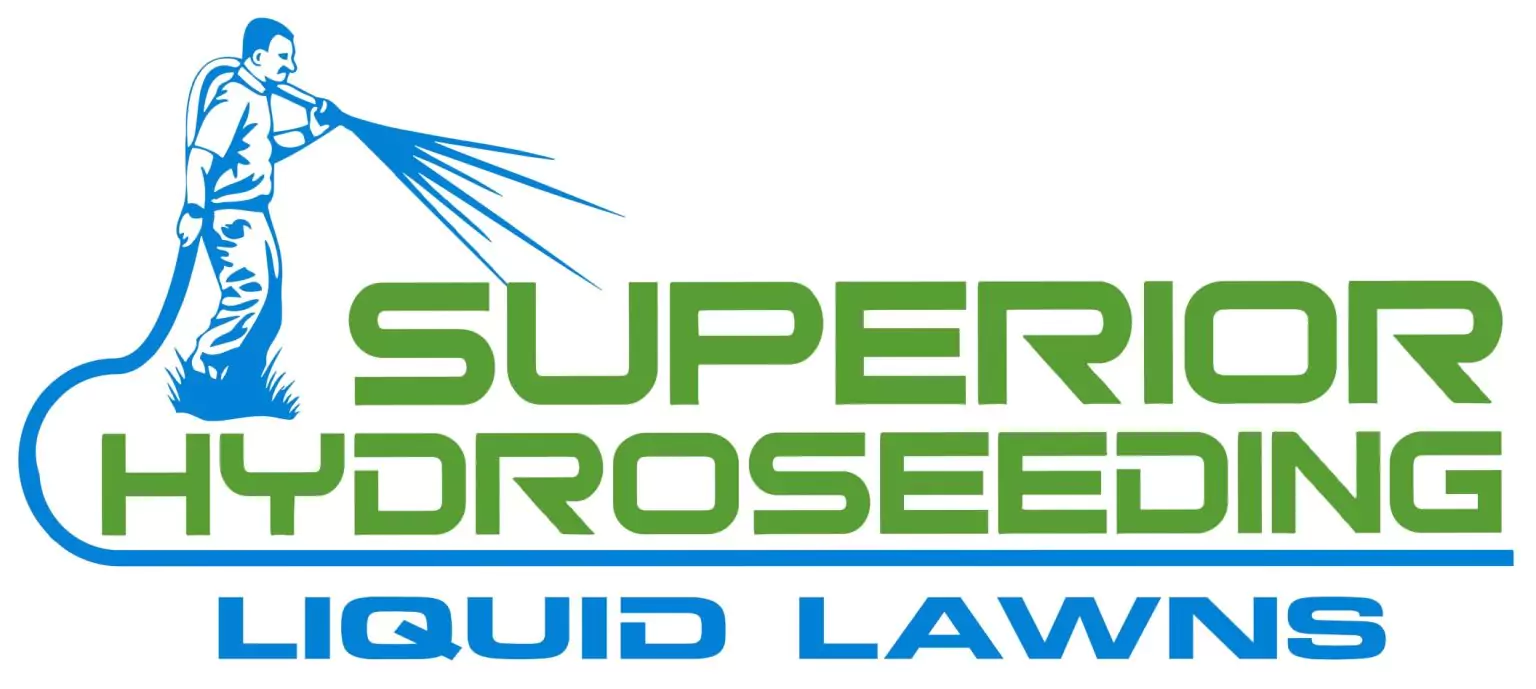So, you’ve got a beautiful property in Tilton, and you want to make sure every detail counts, right? Well, let’s talk about something that might seem small but makes a big difference: lawn edging. Choosing the right edging can really elevate the look of your yard, giving it that crisp, polished appearance. But with so many options out there, from classic to contemporary styles, it can be tough to know where to start. Don’t worry, though – we’ve got you covered! Superior Hydroseeding Liquid Lawns will explore some fantastic edging choices tailored just for your Tilton property.
Consider Your Landscape Style:
Alright, let’s dive into considering your landscape style. Picture this: you step outside your door in Tilton, taking in the beauty of your property. Are you leaning towards a classic, formal vibe, with neatly trimmed hedges and symmetrical flower beds? Or maybe you’re more into that relaxed, cottage garden feel, with winding paths and bursts of colorful wildflowers. Whatever your style, it’s essential to choose lawn edging that complements and enhances it. The right edging can tie everything together, adding that extra flair that makes your landscape uniquely yours. So, take a moment to envision your dream outdoor space, and let’s find the perfect edging to bring that vision to life!
Materials Matter:
Now, let’s talk about why materials matter when it comes to lawn edging. Picture this: you’re strolling through your neighborhood in Tilton, admiring the different yards. Some have sleek metal edging, adding a contemporary touch, while others boast timeless brick borders that exude charm. The material you choose for your lawn edging not only affects the aesthetics but also its durability and maintenance requirements. Brick offers a classic look and withstands the test of time, while metal provides a modern edge and requires minimal upkeep. Consider the vibe you want to create and the practical aspects of each material to find the perfect fit for your Tilton property. Additionally, incorporating lawn installation for small yards into your considerations can further refine your choice, ensuring optimal functionality and visual appeal.

Ease of Installation:
Let’s chat about the ease of installation when it comes to lawn edging. Picture this: you’ve got your hands full with other projects around your Tilton property, and you want something that won’t add extra stress. Well, the good news is, there are plenty of options out there that make installation a breeze. Some edging materials, like flexible plastic or rubber, simply require you to dig a shallow trench and press them into place – no fancy tools or professional help needed. On the other hand, more rigid materials like brick or stone might require a bit more effort and possibly some DIY skills. So, think about your schedule, your comfort level with DIY tasks, and choose an edging option that won’t leave you pulling your hair out during installation. After all, the goal is to enhance your yard, not create more work for yourself!
Functionality:
- Defining Borders: Lawn edging helps clearly define the boundaries between your lawn and other landscaping features like flower beds, pathways, or driveways. This prevents grass from encroaching where it’s not wanted and gives your yard a neat, polished appearance.
- Grass Containment: One of the primary functions of edging is to keep grass from spreading into flower beds or other areas where it doesn’t belong. This containment prevents the need for constant trimming or weeding, saving you time and effort in maintenance.
- Weed Prevention: By creating a barrier between your lawn and garden beds, edging can also help reduce the infiltration of weeds into your landscaped areas. This means less time spent pulling weeds and more time enjoying your beautiful yard.
- Water Control: Some types of lawn edging, particularly those with a slight lip or barrier, can help control water flow within your landscape. This can be especially useful for preventing erosion or directing water away from structures like your home’s foundation.
- Safety Enhancement: In areas where there’s a significant drop-off, such as raised flower beds or retaining walls, edging can provide a safety barrier to prevent accidental trips or falls.
- Enhancing Landscaping Features: Edging can also serve as a decorative element, framing and highlighting key features of your landscaping design. Whether it’s accentuating a colorful flower bed or outlining a winding pathway, the right edging can elevate the overall look of your yard.
Maintenance:
Let’s talk about maintenance when it comes to lawn edging. You’ve got enough on your plate already, right? So, it’s essential to choose an edging option that won’t add to your to-do list. Some materials, like metal or plastic, require minimal upkeep – maybe just a quick wipe-down every now and then to keep them looking fresh. On the other hand, natural materials like wood or stone might need more attention, such as occasional sealing or repositioning to maintain their appearance and integrity over time. Consider how much time and effort you’re willing to dedicate to upkeep when selecting your edging material. After all, the goal is to enhance your yard, not create more work for yourself! Additionally, understanding the role of mulch in lawn installation can help streamline maintenance efforts and promote healthy growth, further optimizing your outdoor space.

Local Climate Considerations:
Let’s chat about how local climate considerations play into your choice of lawn edging. Here in Tilton, we experience a range of weather conditions throughout the year, from scorching summers to frosty winters. It’s crucial to select edging materials that can withstand whatever Mother Nature throws our way. For instance, if intense sunlight is a common occurrence, you’ll want to opt for materials that won’t fade or degrade under UV exposure. Likewise, if heavy rain or snow is a regular feature, you’ll need edging that can handle moisture without warping or deteriorating. Additionally, frosty winters might cause some materials to crack or become brittle, so it’s essential to choose options that can withstand freezing temperatures. By considering our local climate when selecting lawn edging, you can ensure your yard looks great year-round without having to worry about weather-related damage.
Blend with Surroundings:
Let’s talk about how your choice of lawn edging can blend seamlessly with the surroundings of your Tilton property. Picture this: you’ve worked hard to create a beautiful outdoor space, with lush greenery, vibrant flowers, and maybe even some unique architectural features. The last thing you want is for your edging to stick out like a sore thumb, right? That’s where blending with your surroundings comes in. Whether your home boasts a classic, rustic charm or a sleek, modern aesthetic, there’s an edging option that can complement it perfectly. Consider the colors, textures, and overall style of your landscape when choosing materials and designs for your edging. By selecting options that harmonize with your surroundings, you can create a cohesive and visually appealing outdoor environment that truly feels like home! Additionally, incorporating lawn installation, such as building a DIY garden shed, into your overall design plan can further enhance the cohesive look and functionality of your outdoor space.
Budget:
- Initial Cost: Different materials come with varying price tags. For example, while basic plastic or metal edging tends to be more budget-friendly upfront, options like stone or brick may require a larger initial investment.
- Long-Term Value: While some materials might cost more initially, they may offer better durability and longevity, ultimately saving you money on replacements or repairs in the long run.
- Installation Costs: Consider whether you’ll be installing the edging yourself or hiring professionals. Some materials may require specialized tools or expertise, which can add to the overall cost.
- Maintenance Expenses: Factor in ongoing maintenance costs when budgeting for your lawn edging. While some materials require minimal upkeep, others may need regular cleaning, sealing, or repairs, which can impact your long-term budget.
- Customization Options: Depending on your budget, you may want to explore customization options such as intricate designs or unique finishes. Keep in mind that more elaborate features may come with additional costs.
By carefully considering these budget points, you can choose lawn edging that not only fits your financial plan but also provides the best value for your Tilton property in the long term.

Long-Term Durability:
When it comes to selecting lawn edging for your Tilton property, long-term durability is a key factor to consider. Picture this: you’ve invested time and money into creating a stunning outdoor space, and you want your edging to stand the test of time alongside it. Opting for durable materials like stone, concrete, or metal can ensure that your edging maintains its integrity through years of exposure to the elements. These materials are resistant to weathering, fading, and damage, providing a reliable barrier between your lawn and garden beds for years to come. While these options may require a higher initial investment, their longevity often outweighs the cost, saving you from frequent replacements or repairs down the line. By prioritizing long-term durability in your choice of lawn edging, you can enjoy a beautiful and well-maintained landscape for years to come, enhancing the overall value and appeal of your Tilton property.
FAQ’s:
What is the most effective lawn edging?
Metal landscape edging is often considered the most effective due to its durability, flexibility, and clean aesthetic.
What is the best edging to use for landscaping?
Brick or stone edging is often considered the best choice for landscaping due to its timeless appeal, durability, and versatility in complementing various styles of outdoor spaces.
What is the purpose of edging a lawn?
The purpose of edging a lawn is to create a defined border between the grass and other landscaping elements, such as flower beds, pathways, or driveways, for a neat and manicured appearance while also preventing grass from encroaching into these areas.
When should you edge your lawn?
You should edge your lawn when the grass begins to encroach into flower beds, pathways, or other landscaped areas, typically done during the growing season every 2-4 weeks for a well-maintained appearance.
How do you use a lawn edging tool?
To use a lawn edging tool, simply position it along the desired edge of the lawn, apply pressure, and push or pull the tool along the edge to create a clean, defined border.
CONCLUSION:
In conclusion, selecting the right lawn edging for your Tilton property is essential for enhancing its aesthetic appeal, maintaining a neat and well-defined landscape, and minimizing maintenance efforts. By considering factors such as landscape style, materials, functionality, local climate, and budget, you can make an informed decision that perfectly suits your preferences and needs. Whether you opt for classic brick, durable metal, or another material, the right lawn edging can elevate the overall look of your property and provide long-lasting beauty for years to come. So, take your time, explore your options, and choose the perfect edging to make your Tilton property shine.

